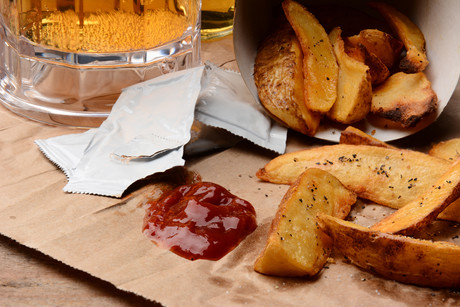Slippery packaging to reduce food waste

Foods like condiments, dairy products, beverages and some meat products often get stuck inside their packaging, contributing to the millions of pounds of edible food American consumers discard every year. Slippery packaging may be the answer to reducing food waste, according to researchers from Virginia Tech.
They created slippery packaging by wicking vegetable oils into the surfaces of common extruded plastics and said the technique could be applied to inexpensive and readily available plastics such as polyethylene and polypropylene. These make up 55% of the total demand for plastics in the world today, and they are one of the easiest plastics to recycle.
Ranit Mukherjeesaid, engineering mechanics doctoral student at Virginia Tech and lead author, said, “Previous SLIPS, or slippery liquid-infused porous surfaces, have been made using silicon- or fluorine-based polymers, which are very expensive. But we can make our SLIPS out of these hydrocarbon-based polymers, which are widely applicable to everyday packaged products.”

SLIPS were first developed at Harvard in 2011 and are porous surfaces that can hold a chemically compatible oil within their surfaces through wicking. To keep the oil in place, the surfaces must have some sort of nano- or micro-roughness which can be achieved by either roughening the surface material with a type of applied coating, or ensuring the surface material consists of an absorbent polymer. This can also increase costs, but the researchers did not have to add any surface roughness to these hydrocarbon-based polymers.
“We actually found oils that are naturally compatible with the plastics, so these oils are wicking into the plastic itself, not into a roughness we have to apply,” said Jonathan Boreyko, an Assistant Professor of Biomedical Engineering and Mechanics and a study co-author.
The method has obvious implications for industrial food and product packaging, but it can also be used to reduce bacterial contamination in the food and pharmaceutical industries.
The research, which received a provisional patent, was funded through an industrial collaboration with Bemis North America. It has been published in Scientific Reports.
Digital labelling trial proposal in NZ for certain imported food
The New Zealand Minister for Food Safety is seeking feedback on a proposal to enable a trial of...
CCEP's reverse vending machine rollout
Coca-Cola Europacific Partners' first RVM has opened in Moorabbin, with others planned across...
Smarter 'natural' packaging for food of the future
From food waste sugars into natural plastic films, researchers at Monash University are creating...











